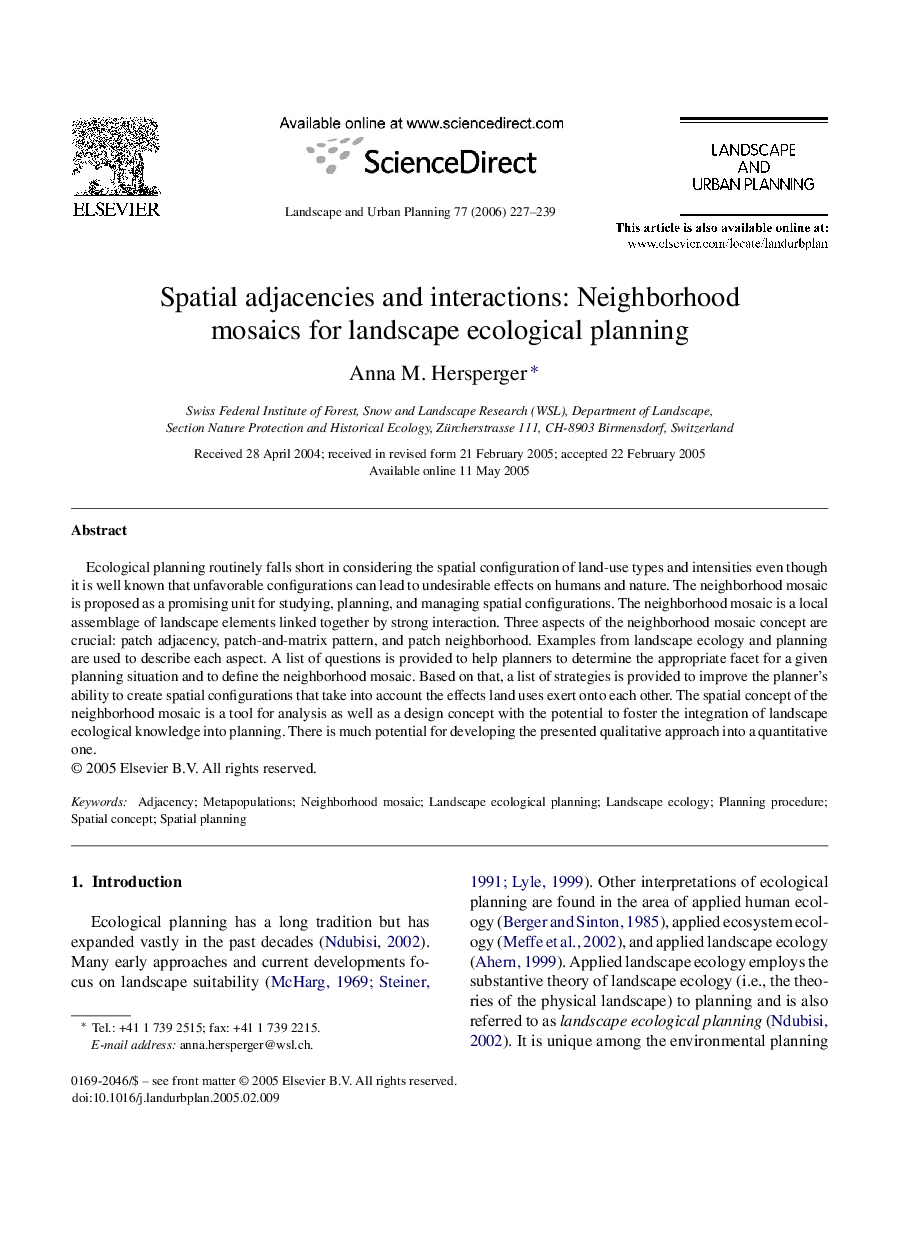| Article ID | Journal | Published Year | Pages | File Type |
|---|---|---|---|---|
| 1050345 | Landscape and Urban Planning | 2006 | 13 Pages |
Ecological planning routinely falls short in considering the spatial configuration of land-use types and intensities even though it is well known that unfavorable configurations can lead to undesirable effects on humans and nature. The neighborhood mosaic is proposed as a promising unit for studying, planning, and managing spatial configurations. The neighborhood mosaic is a local assemblage of landscape elements linked together by strong interaction. Three aspects of the neighborhood mosaic concept are crucial: patch adjacency, patch-and-matrix pattern, and patch neighborhood. Examples from landscape ecology and planning are used to describe each aspect. A list of questions is provided to help planners to determine the appropriate facet for a given planning situation and to define the neighborhood mosaic. Based on that, a list of strategies is provided to improve the planner's ability to create spatial configurations that take into account the effects land uses exert onto each other. The spatial concept of the neighborhood mosaic is a tool for analysis as well as a design concept with the potential to foster the integration of landscape ecological knowledge into planning. There is much potential for developing the presented qualitative approach into a quantitative one.
